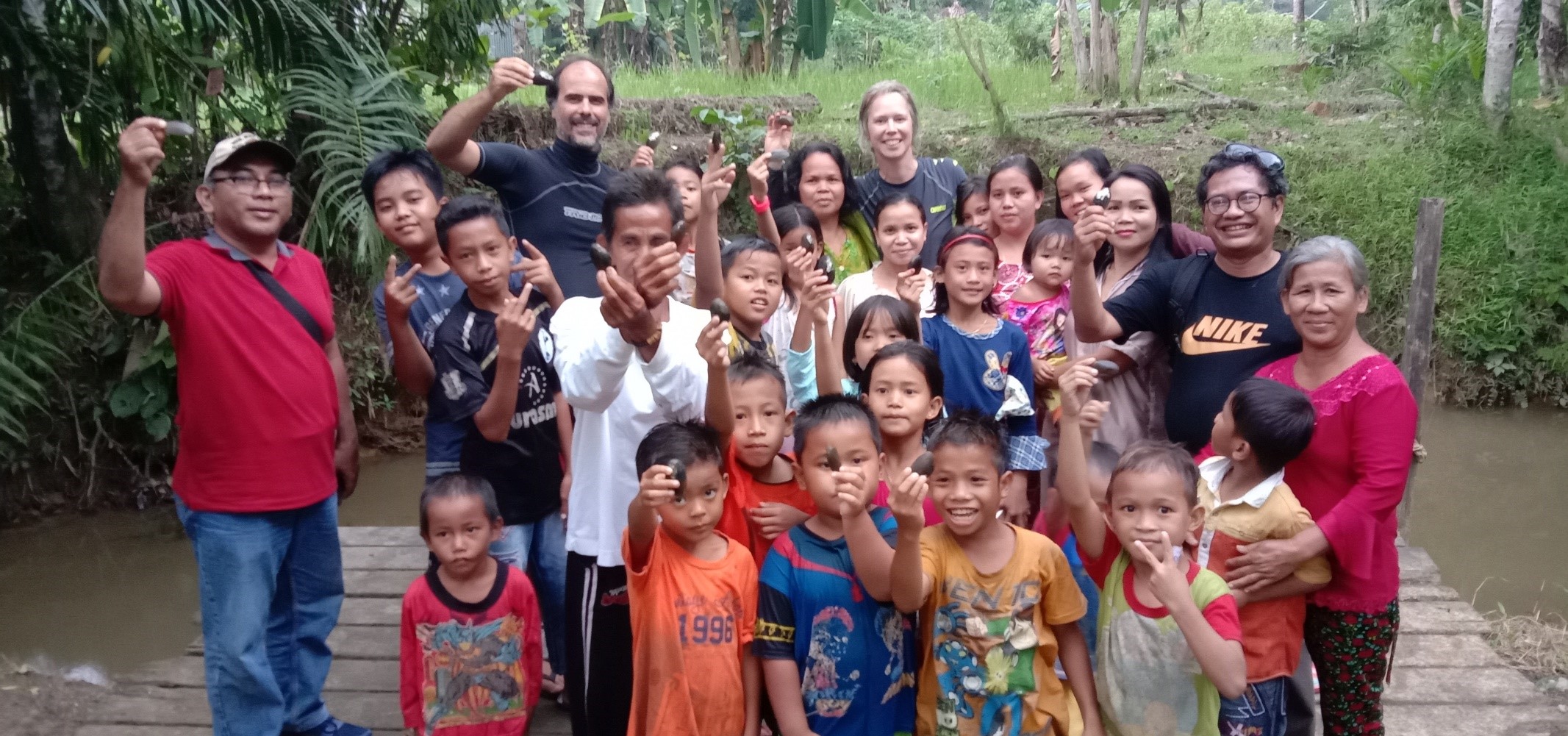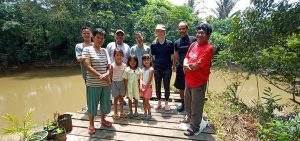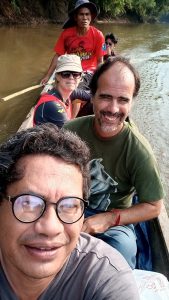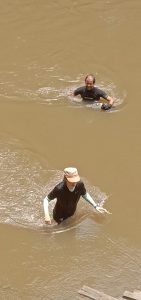
September 25, 2019, by lzzeb
Protecting freshwater mussels in Borneo
A blog by Alexandra Zieritz
Can you eat them? This is the most common question I get asked when telling somebody that I work on freshwater mussels. Well yes, you can and many people do, especially in Southeast Asia. But mussels are a lot more than that. These creatures, inhabiting the bottom of rivers, lakes and other freshwater habitats around the globe, are incredibly efficient biofilters that remove algae, bacteria and other material from the water column at a rate of about 1 litre per hour per mussel. Much of this material is subsequently transported to the benthos, providing food for insects and other invertebrates, which thrive in mussel beds in terms of both abundance and diversity. Mussels of the order Unionida, which represent by far the most successful radiation of bivalves in freshwater habitats and count about 900 extant species, are also extremely interesting from a biological perspective. In contrast to the planktonic larvae of marine bivalves, Unionida have developed parasitic larvae that attach to fish (and the occasional amphibian) in order to deal with the unidirectional flow of rivers (otherwise they would all end up in the sea). But the main reason why I believe freshwater mussels deserve our attention is that they are one of the most threatened groups of organisms. In North America, for example, 10% of the species are already extinct. The situation is likely similar for most other regions of the world, but for Southeast Asia, we don’t know as we lack even the most basic data, including the number of species there were in the first place. This is where I come in.
I work in a biogeographic region called Sundaland, which includes the Malay Peninsula, Borneo, Sumatra, Java, and many other, smaller islands. When I started this project as a Research Fellow at the Malaysia Campus five years ago, all we had to go on were museum records almost exclusively dating from colonial times (pre 1960s). Of course, a lot has changed since then. Most importantly, deforestation has taken place on an industrial scale throughout the region, mostly for timber production and to make space for palm oil plantations. This has devastating effects on biodiversity not only in forests but also in freshwater habitats. One of the aims of my work is to figure out how exactly this is affecting mussel diversity, develop mitigation measures, and identify species and locations of particular conservation concern. At the same time, we are collecting molecular data to reconstruct the evolutionary history of mussel diversity across Southeast Asia. All this involves a lot of fieldwork.

Local villagers, Hari Prayogo (Tanjungpura University), Alexandra Zieritz (University of Nottingham), Manuel Lopes-Lima (University of Porto) and Khairul Adha Rahim (Universiti Malaysia Sarawak) in front of the Sebroang River, Kalimantan.
I have been surveying mussels and their habitats across the Malay Peninsula, Malaysian Borneo and Brunei, but my visit to West Kalimantan (Indonesian Borneo) last month was particularly exciting. Together with my colleagues Khairul Adha Rahim (Universiti Malaysia Sarawak), Manuel Lopes-Lima (IUCN, University of Porto), and our local partners from Tanjungpura University in Pontianak, Hari Prayogo, Sofwan Anwar and Farah Diba, we surveyed parts of the Pawan River in Ketapang Regency and the rivers surrounding Danau Sentarum, one of the world’s most biodiverse lake systems and part of the Kapuas River basin, Borneo’s longest river. The biodiversity in this region is extraordinary, both on land (proboscis monkeys, orang-utans) and in the water. At least 240 fish species are known from Danau Sentarum National Park, representing 71% of Borneo’s freshwater fish fauna. Luckily for us, mussels seem to follow a similar pattern. In Malaysia, native mussels are vanishing (Zieritz et al., 2016; Zieritz et al., 2018) and several species are now threatened (Zieritz & Lopes-Lima, 2018), but populations around Danau Sentarum, where much of the primary forest has been retained, still seem to be doing very well. Together with our local partners, the IUCN and financial support through my Anne McLaren Fellowship and other funding bodies, we will continue to work towards protecting what remains of Borneo’s unique freshwater biodiversity. Our next task is to develop a safe and cost-efficient protocol for surveying mussels using environmental DNA (eDNA) in crocodile-infested rivers of Borneo, a project that will be funded by the National Geographic Society.

Khairul Adha Rahim (Universiti Malaysia Sarawak), Manuel Lopes-Lima (University of Porto), Alexandra Zieritz (University of Nottingham) and our local boatmen on the Laur River, West Kalimantan
References:
Zieritz, A., Bogan, A.E., Rahim, K.A.A., Sousa, R., Jainih, L., Harun, S., Razak, N.F.A., Gallardo, B., McGowan, S., Hassan, R. & Lopes-Lima, M. (2018) Changes and drivers of freshwater mussel diversity and distribution in northern Borneo. Biological Conservation, 219, 126-137.
Zieritz, A. & Lopes-Lima, M. (2018) Handbook and National Red-List of the Freshwater Mussels of Malaysia. 28.
Zieritz, A., Lopes-Lima, M., Bogan, A.E., Sousa, R., Walton, S., Rahim, K.A.A., Wilson, J.-J., Ng, P.-Y., Froufe, E. & McGowan, S. (2016) Factors driving changes in freshwater mussel (Bivalvia, Unionida) diversity and distribution in Peninsular Malaysia. Science of the Total Environment, 571, 1069-1078.
No comments yet, fill out a comment to be the first


Leave a Reply